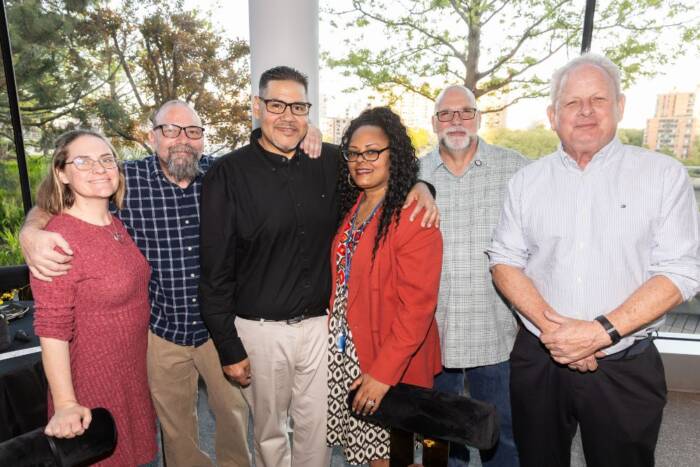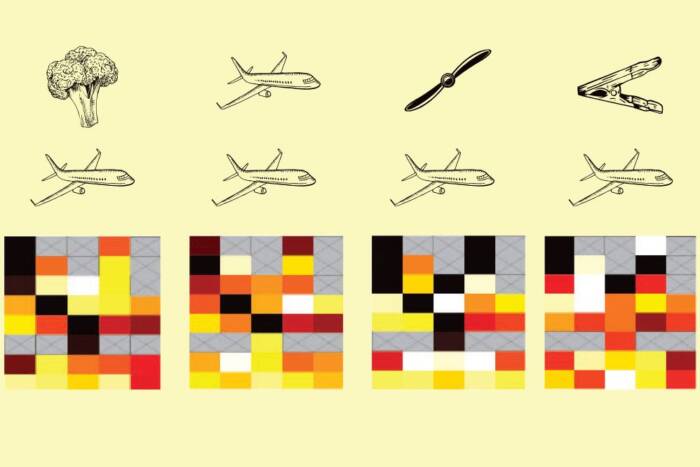Search committee formed to identify Marc Tessier-Lavigne’s successor
 (opens in new window)
(opens in new window)
President Marc Tessier-Lavigne, who recently announced he will be stepping down in September, says he remains committed to ensuring that Rockefeller’s ongoing work continues.
When President Marc Tessier-Lavigne announced earlier this month that he will be leaving the university in September to become the next president of Stanford University(opens in new window), the news was met with praise for his many accomplishments by the campus community, the Rockefeller Board of Trustees, and its chairperson, Russ Carson. The board immediately initiated planning to identify a successor, and Mr. Carson outlined the guidelines according to which members of a search committee would be selected.
“Marc has done tremendous work at Rockefeller over the past five years, including highly successful faculty recruitment, and leaves the university with a balanced operating budget, a capital campaign that is well ahead of schedule, and an ambitious construction project, already in progress, that will revitalize the campus,” says Mr. Carson. He also notes the president’s record-setting fundraising and strong advocacy of the university and its mission, not only in New York City but across the country.
“Thanks in no small part to Marc’s leadership, the university finds itself in an enviably strong position as we turn to the all-important process of identifying Rockefeller’s next president,” Mr. Carson adds. “As we form the committee that will undertake this vital task, we will be calling on the entire Rockefeller community for input and support.”
The search committee
A group representing both trustees and faculty members will lead the search for a new president. Representatives from the Board of Trustees include Mr. Carson, who will serve as chair, along with William E. Ford, Joseph L. Goldstein, Marlene Hess, Thomas P. Maniatis, Robin Chemers Neustein, Marnie Pillsbury, James H. Simons, and Robert K. Steel. Four heads of laboratory—Titia de Lange, Roderick MacKinnon, Michel Nussenzweig, and Leslie Vosshall—selected by the Academic Council and the board’s executive committee, will also serve on the search committee.
“The committee’s composition, a balance that includes both scientific and nonscientific members, is modeled on past presidential searches, including the search of 2010 that resulted in Dr. Tessier-Lavigne’s recruitment,” Mr. Carson says. “I believe we have assembled an outstanding group.”
Next steps
At its first meeting, held on February 17, the committee established an outline for the search process, including a mechanism for seeking thoughts and nominations from the Rockefeller community at large. Mr. Carson expects that the university’s next president will be selected and recruited before Dr. Tessier-Lavigne’s departure on September 1, 2016.
Until then, Dr. Tessier-Lavigne remains in place and keenly engaged with the university’s ongoing work. Overall, operations and execution of the current strategic plan will proceed as usual.
“Although we are very sorry to see Marc go, the university has tremendous momentum, and I have no doubt that we will recruit a new president who is able to build on the strong legacy he leaves behind,” says Mr. Carson.
“Rockefeller has been a fantastic home for me over the past five years, and the decision to leave has been among the most difficult of my life,” Dr. Tessier-Lavigne says. “This remarkable community, and the wonderful colleagues I have here, mean the world to me. Even as I look forward to the next exciting chapter of my career, I am committed to ensuring that our ongoing work at Rockefeller continues, and that the transition to Rockefeller’s next president will be a smooth one.”
Do you have ideas about who might serve as the next president of Rockefeller? The search committee welcomes suggestions from the whole community, as well as thoughts about the qualities to look for in candidates. Email them your recommendation at search@rockefeller.edu(opens in new window), and make sure to include the person’s current institutional affiliation and a brief description of why you think he or she should be considered for the job. All suggestions will be treated confidentially.


